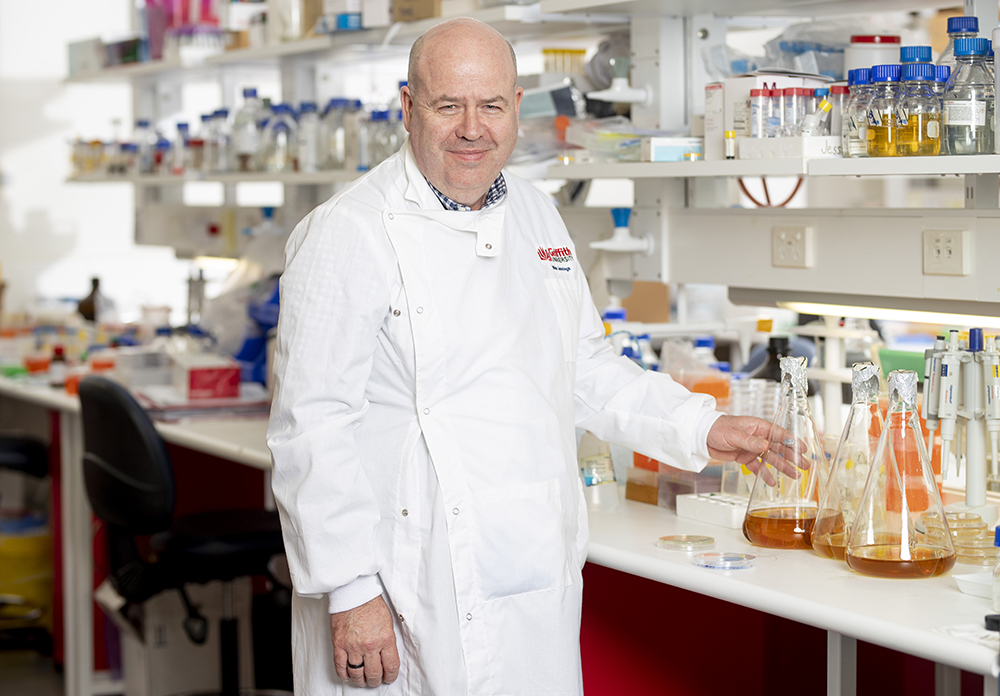
Griffith University’s , in collaboration with researchers from the , have entered into an exclusive licensing deal with to commercialise a novel cancer diagnostic tool.
Together, the teams of researchers have engineered a unique protein, called SubB2M, that binds specifically to a sugar molecule only present in cancer cells – a potential game-changer for detecting cancer.
Sienna Cancer Diagnostics Ltd (ASX:SDX), a medical technology company developing and commercialising innovative cancer-related tests, has signed the exclusive worldwide license agreement to develop and commercialise the unique cancer probe, SubB2M, which is complimentary to other recent Sienna technology initiatives, including ™.
SubB2M binds to a sugar molecule only present in human cancers and can detect its presence in the serum of cancer patients.
Professor , an NHMRC Principal Research Fellow and the Deputy Director at Griffith University’s Institute for Glycomics said, “As a co-inventor of SubB2M I am very excited that SubB2M is going to be developed for use as a screening and diagnostic tool by Sienna Cancer Diagnostics Ltd, an Australian company with a track record in developing and commercialising cancer diagnostic tests.
“My laboratory will work closely with Sienna to ensure that the SubB2M cancer tests are developed in a timely way to ensure optimal accuracy and efficacy on a high throughput platform.”
In pilot clinical studies using surface plasmon resonance, SubB2M has detected cancers with 100% sensitivity and specificity for mid to late-stage cancers, and >95% specificity and 100% sensitivity for early-stage cancers. There is also evidence that the cancer-specific sugar is present in a wide range of solid human tumours and can be detected in serum using SubB2M.
Sienna CEO, Mr Carl Stubbings, said: “We believe that this technology could radically improve how cancer is detected and diagnosed.
“It is recognised that the sugar molecule that SubB2M binds to is only present in people with cancer, having been engineered for this sole purpose in the Adelaide and Griffith universities’ laboratories. The SubB2M protein is compatible with a wide range of cancer detection chemistries and assays, including with our SIEN-NETs to enhance circulating tumour cell binding and detection with no interference from non-cancer cells.
“In our opinion, SubB2M is superior to any other pan-cancer biomarker on the market. Furthermore, it has a broad range of applications beyond laboratory assays. It could also be used in in vivo imaging modalities, such as PET.”
As part of the exclusive licence, Sienna will collaborate with the Institute for Glycomics and the University of Adelaide to provide the data needed to commercialise cancer screening and diagnostic assays based on SubB2M.
The first stage will focus on developing a high throughput ELISA-based assay liquid biopsy assay for cancer screening and monitoring suitable for use in hospital pathology laboratories. It is anticipated that this will take 12-18 months to complete.
In parallel, Sienna will actively develop SubB2M for other applications, including a novel circulating tumour cell capture assay and a novel reagent for PET imaging in conjunction with industry partners.
The technology grew from research started more than 10 years ago by Adelaide researchers Professor Adrienne Paton and Professor James Paton who said “we look forward to working with Sienna and our colleagues at Griffith’s Institute for Glycomics to translate our research into improved outcomes for cancer patients. This is an outstanding example of transformational benefits to human health emanating from basic research in the university environment.”
Professor AO, Director and Principal Research Leader of Griffith’s Institute for Glycomics added, “From the laboratory bench to the patient’s bedside; translational outcomes are the ultimate goal of the Institute for Glycomics. This is another wonderful example of how the Institute engages with industry to take our discoveries to market and translate research into tangible benefits for the global community.”








